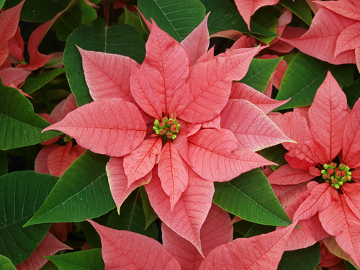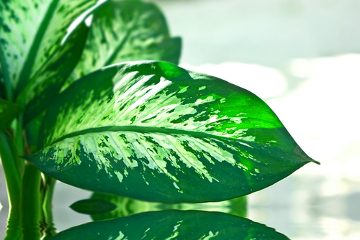Colorful leaves and striking, fragrant flowers. There are several characteristics that make plants attractive to our eyes. However, what many forget is that these same plants can hide substances that have high toxicity.
Every year a large number of accidents with toxic plants occur in Brazil. This is due to the fact that many are of ornamental interest and, therefore, are easily found in gardens, homes and even in public places.
According to the National Toxic-Pharmacological Information System (SINITOX), 60% of records of plant poisoning occur in children under nine years of age and, in most cases, by accident. Therefore, attention must be doubled with regard to plants that are easily accessible to children.
See below examples of some plants that pose a risk to our health and are easily found in Brazil:
Poinsettia (Euphorbia pulcherrima) - This highly known plant has toxic substances in all its parts. That milky substance (latex) produced by the plant can cause skin irritations, such as itching and a burning sensation. If the plant is ingested, it can cause vomiting and diarrhea, in addition to causing swelling in the mouth and tongue. In contact with the eye, it can cause irritation and impair vision.

This plant is widely used in Christmas decorations, despite being toxic
Nobody can with me (Dieffenbachia picta) - All portions of this plant are considered toxic due to the presence of crystals of calcium oxalate. If ingested, it can cause swelling in the mouth and tongue, nausea, vomiting, diarrhea, exaggerated saliva production and even suffocation. If placed in contact with the eyes, it can lead to corneal damage.

If ingested, this plant causes serious problems, as it has calcium oxalate
Glass of milk (Zantedeschia aethiopica) - This plant also presents toxicity in all its parts due to the presence of large amounts of calcium oxalate. If ingested, it causes swelling in the mouth and tongue, nausea, vomiting, diarrhea, exaggerated saliva production, difficulty in swallowing and suffocation. Just like the me-nobody-can, if placed in contact with the eyes, it can damage the cornea.

Widely used ornamentally, this plant has high toxicity
Do not stop now... There's more after the advertising ;)
Crown of Christ (Euphorbia milii) - All portions of this plant are toxic due to the presence of latex, which can cause irritation to the skin and mucous membranes. If ingested, it is responsible for causing nausea, vomiting and diarrhea, in addition to causing swelling in the mouth and tongue. When in contact with the eyes, it causes irritation that can make it difficult to see.

This plant has a latex that causes a lot of irritation to the skin and mucous membranes.
Castor bean (ricinus communis) - The toxicity of this plant is in its seeds, which have a substance known as ricin. Although not used as an ornamental plant, this plant is easily found in vacant lots. Ingesting its seeds causes serious gastrointestinal problems, including nausea, vomiting and bloody diarrhea. Depending on the amount ingested, it can lead to seizures, coma and even death.

Ingestion of castor bean seeds can lead to death
Trumpet (Mild Daturas) - The entire plant is considered toxic due to the presence of alkaloids. When ingested, it can cause dry mouth sensation, tachycardia, hallucinations, agitation and pupil dilation. In some cases it can lead to death.

The presence of alkaloids makes this plant very dangerous
There are several other plants that can cause serious accidents. As examples, we can also mention pine nuts, wild manioc, cayenne jasmine, napoleon hat, oleander and nettle.
Given the huge amount of plants with active ingredients that harm our health, some preventive measures must be taken. Here are some tips:
→ Do not leave plants in places accessible to children and always teach them about the dangers of some vegetables;
→ Try to find out about the toxicity of the plants that are in your house;
→ Take great care when pruning plants that produce a milky substance (latex), as they can cause unpleasant reactions. Wearing gloves and always washing your hands after working in the gardens are fundamental procedures;
→ Whenever you notice any unpleasant symptoms after handling a plant, seek medical attention. The same is true for when you observe that someone has ingested some plant considered toxic.
By Ma. Vanessa dos Santos
